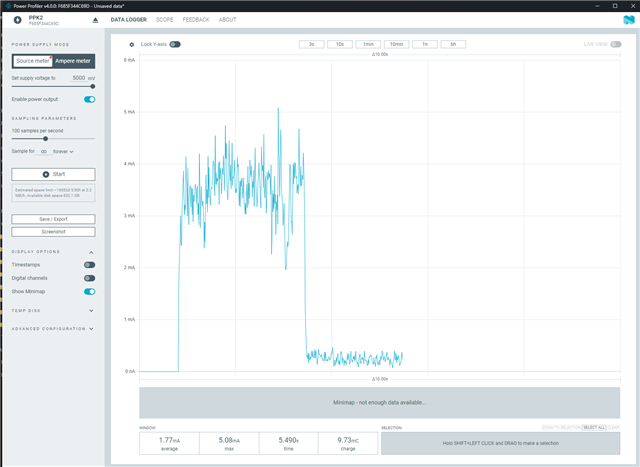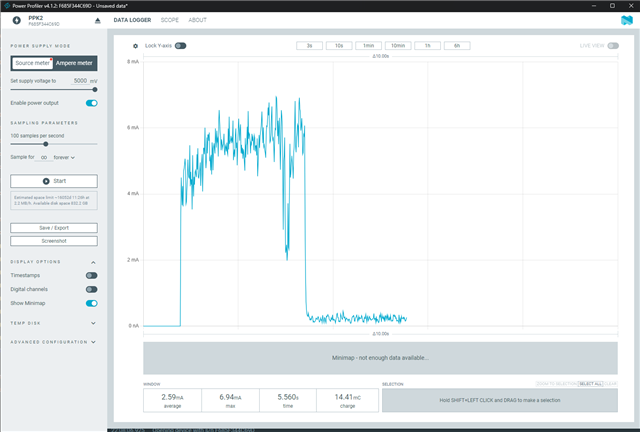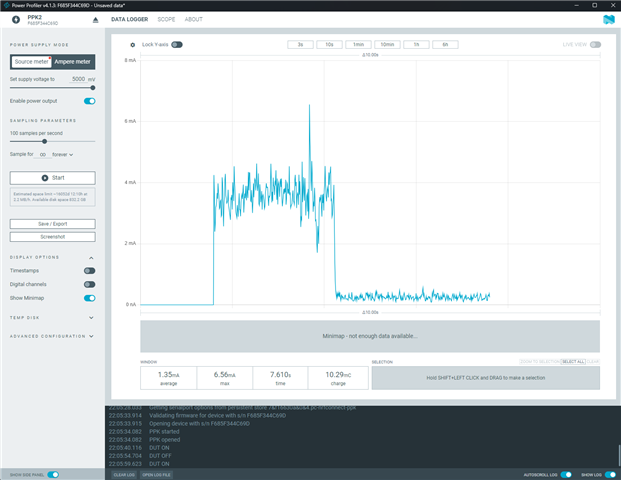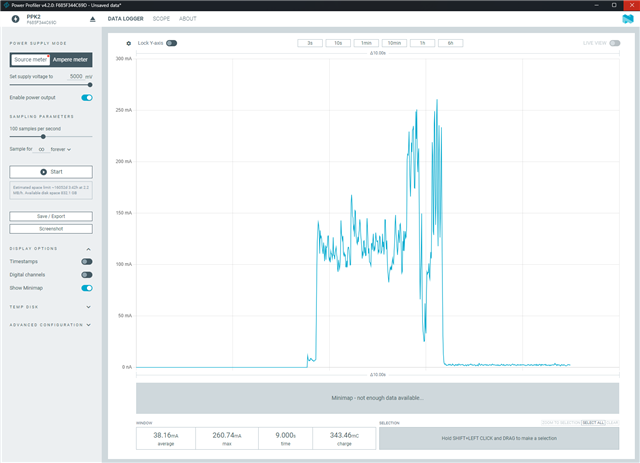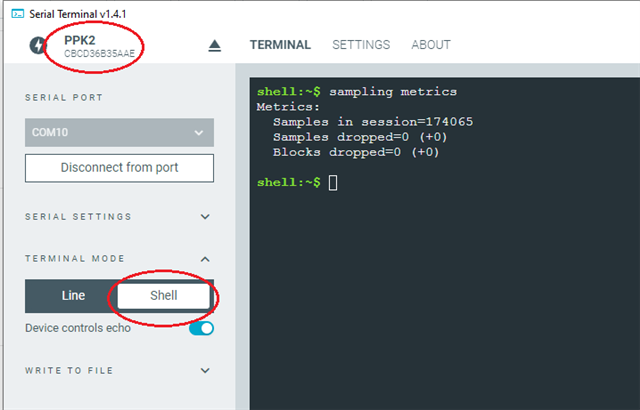Below are power consumption measurements of a DUT being booted with the same PPK2 in SMU mode with various software versions. The only variable being changed is the PPK2 software version.
V4.0.0, V4.1.2, V4.1.3 all show peak around 5mA
V4.2.0 shows a peak of around 250mA, and a completely different profile.
PPK2 s/n F685F344C69D
